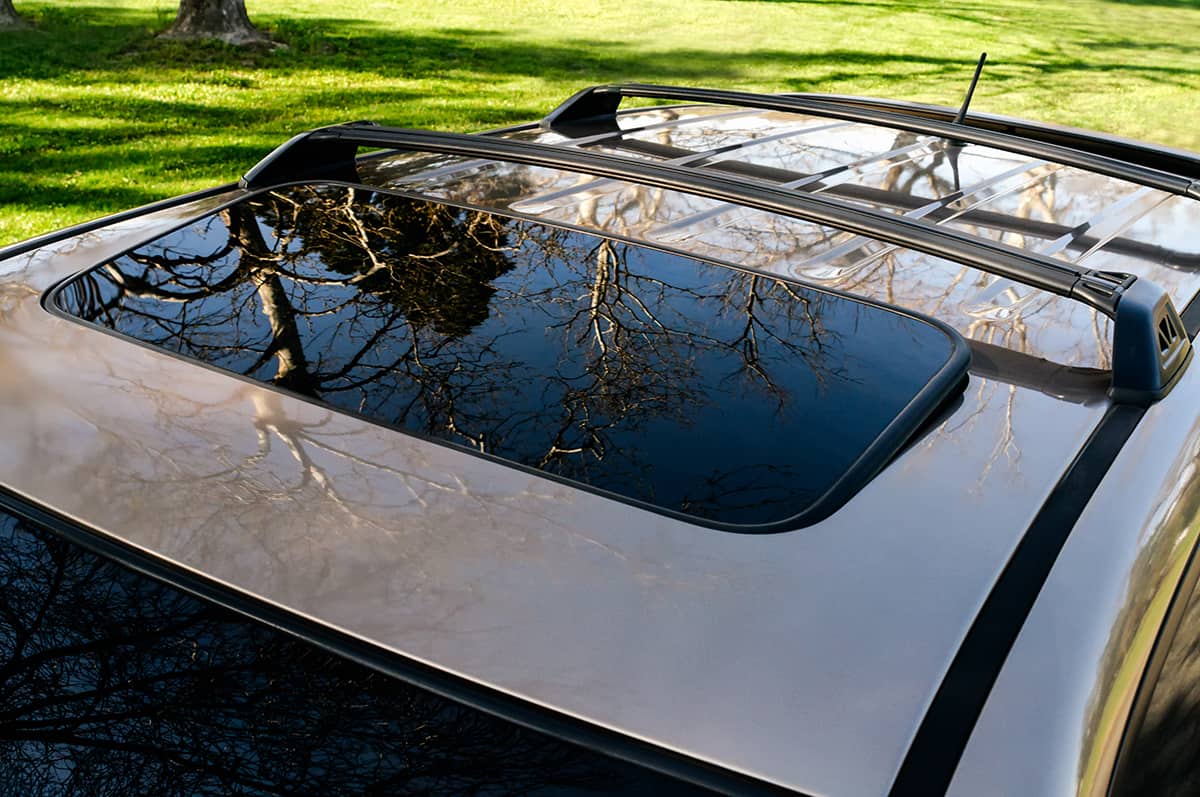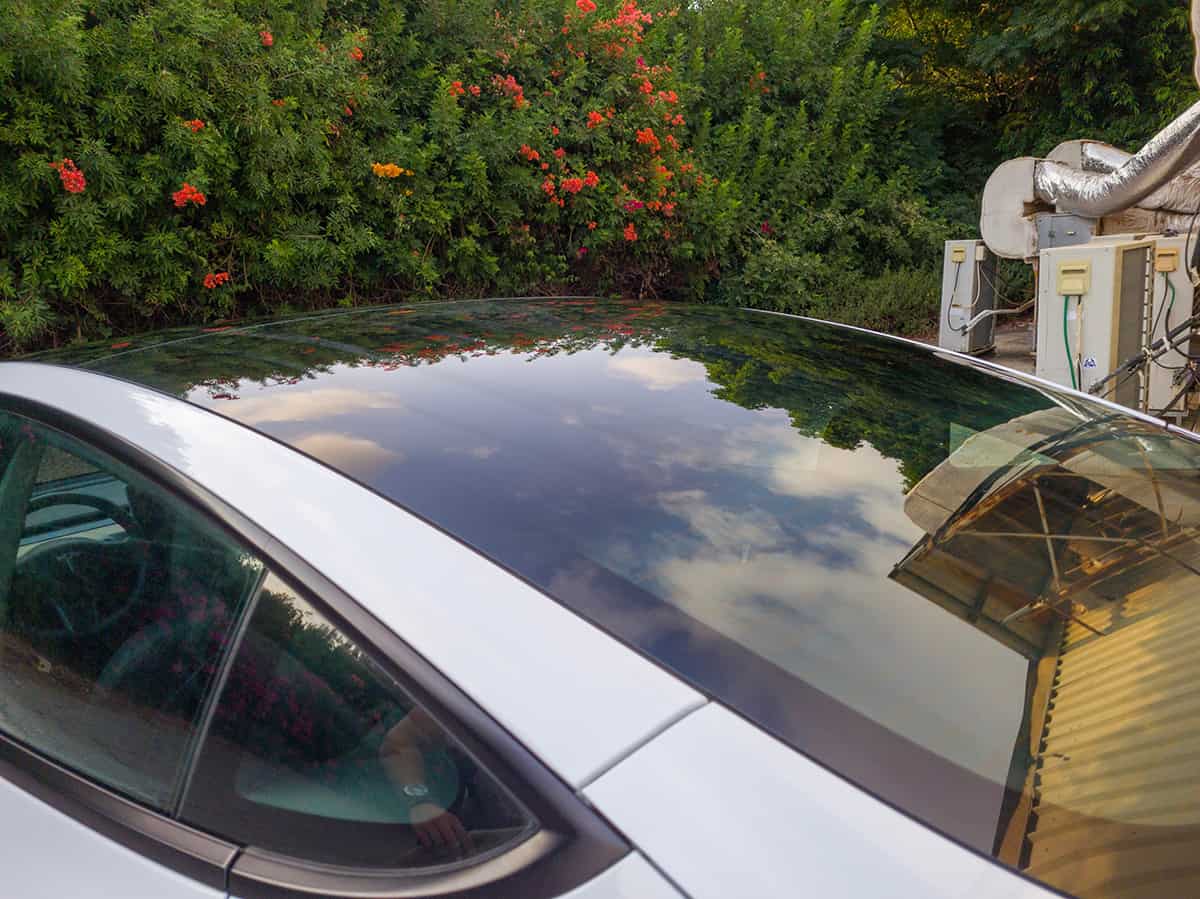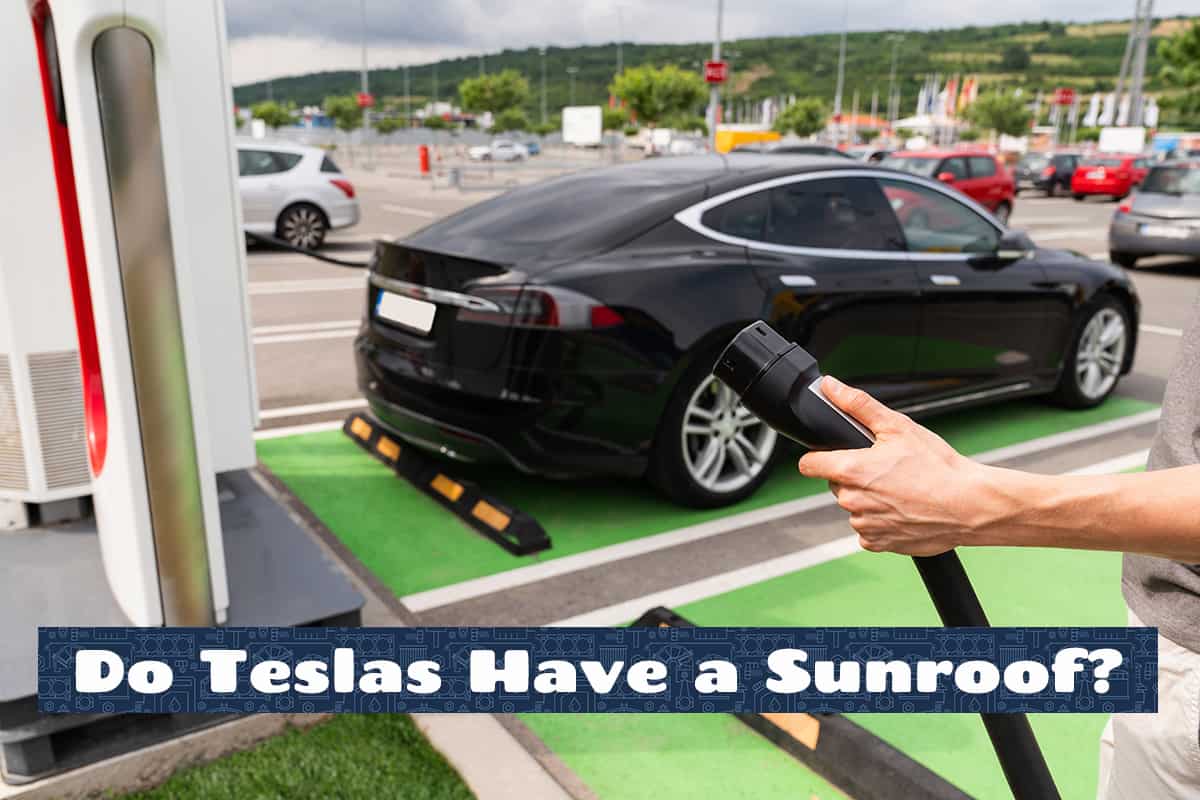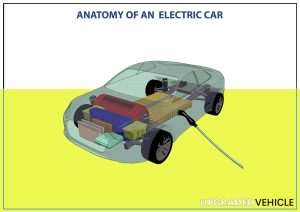Tesla, a pioneer in the electric vehicle industry, has been the talk of the town for its innovative features and groundbreaking automotive technology. Their cars are not only known for their impressive electric range and cutting-edge tech but also for their design and aesthetics. One aspect that often piques interest is the inclusion or absence of sunroofs in Tesla vehicles.
The Tesla Model S and Model X have offered variations of sunroofs during their production years. The Model 3 and Model Y come with a fixed glass roof, giving passengers an unobstructed view of the sky without an opening feature.
Today, we’ll discuss Tesla sunroofs, from their features to their benefits, as well as how to care for the sunroof properly.
The Concept of a Sunroof

A sunroof is a movable panel on a vehicle’s roof, allowing light and air to enter the cabin. Modern cars, including electric vehicles like Tesla, often feature sunroofs as a luxury option.
Traditional Sunroofs vs. Panoramic Roofs
Traditional sunroofs are typically smaller and might be manually operated or powered by a motor. They can slide open or tilt to vent air. Panoramic roofs, on the other hand, span a larger portion of the vehicle’s roof, providing a more expansive view. Some panoramic roofs open like traditional sunroofs, while others are fixed.
Learn about different truck models that have sunroof options here.
Benefits of Having a Sunroof
- Aesthetic Appeal: A sunroof can make a car look sleek and modern, adding to its visual appeal.
- Increased Natural Light: Sunroofs allow sunlight to enter the car, making the interior brighter and often more pleasant.
- Ventilation: Opening the sunroof provides ventilation, allowing fresh air to circulate and reducing the need for air conditioning.
- Resale Value: Vehicles equipped with sunroofs can sometimes fetch a higher resale value due to the perceived luxury and additional features.
While sunroofs offer many perks, they can also have downsides like potential leaks or increased wind noise.
Tesla Models and Their Roof Options
Tesla has captured attention not just for its zero-emission cars but also for its unique designs, including their distinctive roofs. Here, we’ll go over the various Tesla EV models and their roof options.
Tesla Model S
The Tesla Model S, renowned for its acceleration and range, initially offered a solid metal roof, a panoramic sunroof, and later an all-glass roof.
- Evolution of the Model S Sunroof: The earlier versions of the Model S came with an optional panoramic sunroof. This was a retractable sunroof, allowing drivers to adjust the opening size, ranging from a slight tilt to fully open. As designs evolved, Tesla introduced the all-glass roof as standard, eliminating the panoramic sunroof option.
- Current Options: Today, Model S buyers will find that the vehicle comes standard with an all-glass roof, providing an uninterrupted view above, enhancing the spacious feel inside the cabin. The sunroof is movable via the mobile app or the display’s menu.
Tesla Model 3
The Model 3, Tesla’s more affordable sedan, surprised many with its roof options.
- Fixed Glass Roof: All variants of the Model 3 come equipped with a fixed glass roof. This design choice provides passengers with an expansive view of the sky. It’s manufactured using tinted glass which helps block UV and infrared rays, keeping the cabin cool.
- Features and Benefits: Apart from offering a spectacular view and protection from harmful rays, the fixed glass roof adds to the car’s structural strength. It also eliminates common problems associated with traditional sunroofs, such as leaks or mechanical issues with retractable panels.
Tesla Model X
The Model X, known for its falcon-wing doors, offers unique roof choices.
- Panoramic Windshield: One of the largest on any production car, the panoramic windshield on the Model X stretches from the hood all the way to the middle of the car. This design provides front seat passengers with an unparalleled forward and upward view.
- Sunroof Availability: Earlier Model X vehicles did offer a small, optional sunroof located above the rear seats. However, recent versions of the Model X have done away with this feature, instead opting for a continuous, solid roof construction.
Tesla Model Y
Tesla’s crossover, the Model Y, combines the best of Tesla’s vehicles into one efficient and roomy package.
- Panoramic Glass Roof: Similar to the Model 3, the Model Y boasts a fixed panoramic glass roof. It provides an uninterrupted overhead view, lending an airy feel to the interior. This roof, too, benefits from UV and infrared protection.
- Distinct Features: One key feature of the Model Y’s roof is its single-piece construction. This seamless design not only looks aesthetically pleasing but also reduces potential points of failure, ensuring durability.
How Tesla’s Sunroof Stands Out

Tesla’s approach to vehicle design often sets it apart from many other manufacturers. When discussing roofs, Tesla’s choices stand out for several reasons.
1. UV and Infrared Protection
Every Tesla sunroof, whether on the Model S, 3, X, or Y, is designed with special UV and infrared protective coatings. This doesn’t just protect passengers from harmful sun rays but also keeps the car’s interior cooler on bright days. Traditional vehicles may require additional tints or shades to achieve a similar effect, but Tesla integrates this feature as a standard.
2. Acoustic Properties
Road noise can sometimes be a concern, especially at highway speeds. Tesla’s sunroofs have been engineered to reduce this noise. The multi-layered glass construction plays a role in dampening external sounds, making it a cut above many competitors in terms of acoustic comfort.
3. Safety Considerations
Tesla takes safety seriously, and their sunroofs are no exception:
- Durability: Tesla’s glass roofs undergo rigorous testing to ensure they can withstand both everyday wear and extreme situations. The strength of the all-glass roof, especially in the Model 3 and Model Y, is commendable. It plays a role in structural rigidity, adding to the car’s safety profile.
- Shatter-Resistant: In the event of an accident, Tesla sunroofs are designed to be shatter-resistant. This means that rather than breaking into sharp, dangerous shards, the glass would crumble into smaller, more harmless pieces, reducing potential injury.
- Roll-Over Protection: Tesla vehicles, with their low center of gravity due to battery placement, already have a reduced risk of roll-over. However, should such an event occur, the strength of the sunroof plays a part in protecting the passengers by preventing cabin intrusion.
Care and Maintenance of the Tesla Sunroof
Whether you drive a Model S with its panoramic sunroof or a Model 3 with its all-glass top, some general care guidelines apply.
Cleaning Recommendations
- Exterior Cleaning: Dirt, dust, and other particles can accumulate on the sunroof. Using a soft microfiber cloth paired with automotive glass cleaner can effectively remove these. It’s best to avoid abrasive tools or solutions, as they may scratch or damage the protective coatings.
- Interior Cleaning: The inside of the sunroof can be cleaned using a damp cloth. It’s less exposed to elements, so it typically requires less aggressive cleaning.
- Track Maintenance: For models with opening sunroofs, the tracks can gather debris. Gently using a vacuum or a soft brush can help keep these clear, ensuring smooth operation.
Potential Issues and Fixes
- Stuck Sunroof: If your Tesla’s retractable sunroof doesn’t open or close, it might be due to debris in the tracks or a software glitch. After ensuring the tracks are clean, a soft reset of the car’s system might solve the problem.
- Leaks: While rare, leaks can occur. Regularly check the sunroof’s seals and drainage channels. If you notice any issues, it’s best to consult a Tesla service center.
- Automatic Reversal: Tesla’s sunroofs are equipped with obstruction sensors. If the sunroof reverses direction when closing, ensure there’s no obstruction. If it persists, a calibration may be required.

